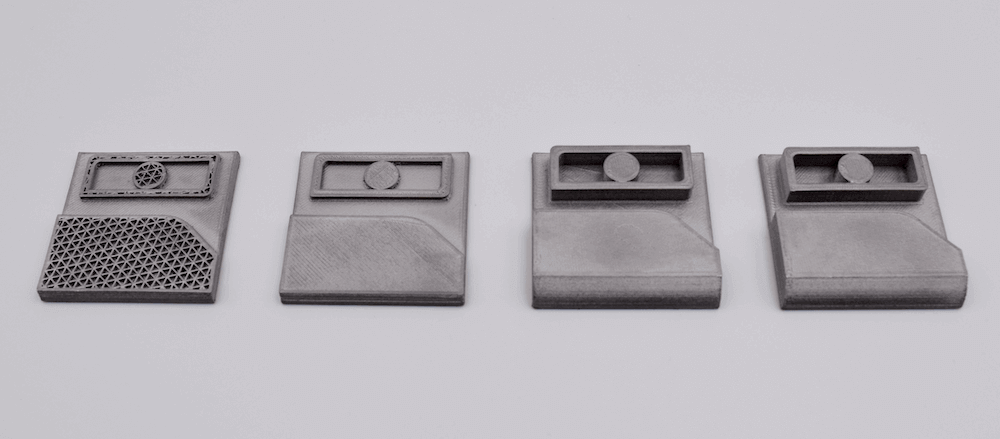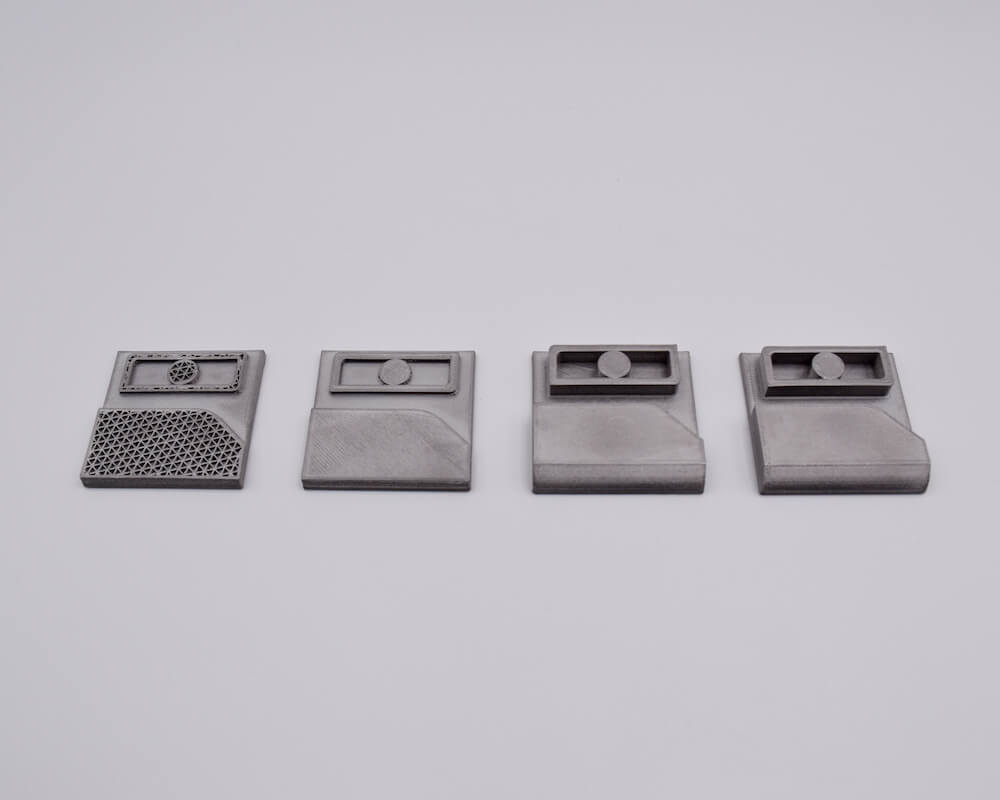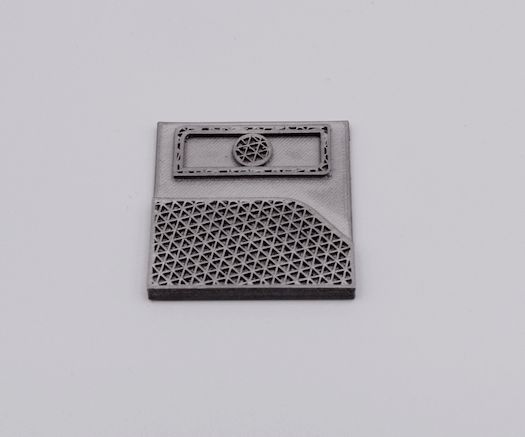Now you can reduce the weight of your Ultrafuse® Metal printed part with our Infill option!
Posted By Stephany Vaussanvin on Feb 28, 2022 | 0 comments
We are launching a new option available for metal printed parts with Ultrafuse® that can help reduce the weight of your part and conserve the amount of material that is necessary for the optimal functioning of your part. This new option is called infill and it can be found in the printing configuration panel when you upload your 3D file and select any of the Ultrafuse® 3D printing materials.
What is infill density?
Infill density is the amount of material that can be inside of a part. This is usually defined as a percentage between 50 and 100, with 50% hollow and 100% solid. The fullness determines the weight of a part; the fuller a part is, the heavier it will be.
Another point to note is the print time; the more infill density a part has, the longer the print time and higher material consumption.
How does it work?
Compared to other traditional manufacturing techniques, 3D printing with filament allows you to carefully control two mutually exclusive aspects of a part: exterior walls and infill. The walls form the outermost regions of a part, while the infill is whatever exists within them.
The infill of a part plays a huge role in a part’s strength, weight, and structure. In filament 3D printing, you can define several parameters that govern the type of infill used for a part.
The most important of these parameters fall under two fundamental aspects: infill density and infill pattern.
What is the best infill density percentage for my part?
If you would like a non-solid part, you can select 50% infill density in the printing configuration panel if your part allows for it. A 50% infill density will substantially reduce your part’s weight.
(50% infill part on the left – 100% solid part on the right)
For standard prints that don’t need to be super strong, using an infill density of 50% is possible.
With functional prints in order to achieve the highest mechanical properties, an infill of 100% is recommended. This guarantees a more robust and heavier part, which might be necessary for the functioning of the part. You can still conserve good mechanical properties with 50% infill if your part allows for it.
Please keep in mind that parts with a wall thickness below 2.4 mm will be printed solid to maintain the best mechanical properties. Always check the design guidelines for your part to guarantee the optimal weight, print, and strength and understand what is possible without compromising the functionality of your part.
Infill Pattern
Infill pattern is the structure and shape of the material inside of your part. It can range from simple lines to more complex shapes and geometries, affecting a part’s strength, weight, and print time.
We will use a triangular pattern with 50% infill density as a default. Should you require another pattern or another density, you can submit your file already prepared for that, or you can contact us.
(Part printed with 50% density and triangular pattern)
What materials can I use for the Infill option?
We now offer an infill density option with Ultrafuse® 316L and 17-4PH 3D printing metal materials.
Ultrafuse® stainless steel 316L is available with FDM and is ideal for tooling, jigs and fixtures, molds, and other functional parts where durability and resistance are important. A great solution for medical, automotive, or aerospace industries to create functional prototypes and series production.
Ultrafuse® 17-4 PH is available with FDM technology. This stainless steel material is durable and strong with low deformability. It Is suitable for the medical, automotive, aerospace, consumer goods, and oil and gas industries.
With possible applications for:
- Tooling, jigs, and fixtures
- Molds
- Replacement parts
- End-use parts
- Small batches and series production
- Functional parts and prototypes
Create a free account and upload your 3D file to get started today.
Our factory obtained the ISO 9001: 2015 certification, certifying the level of quality and precision of our services. Our experienced team will produce your parts and are here to answer your questions, contact us.


 Connect with Google
Connect with Google Connect with Facebook
Connect with Facebook

